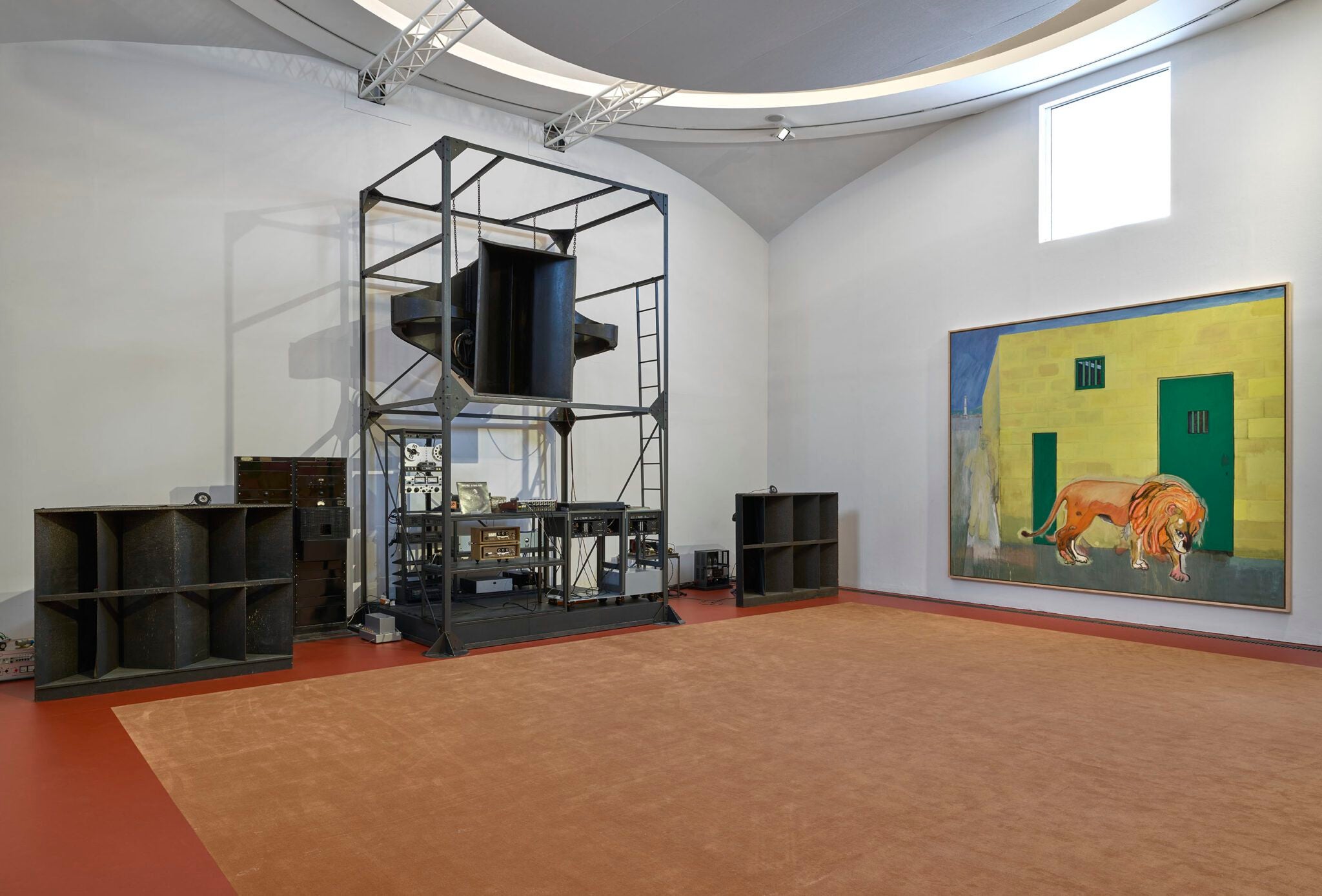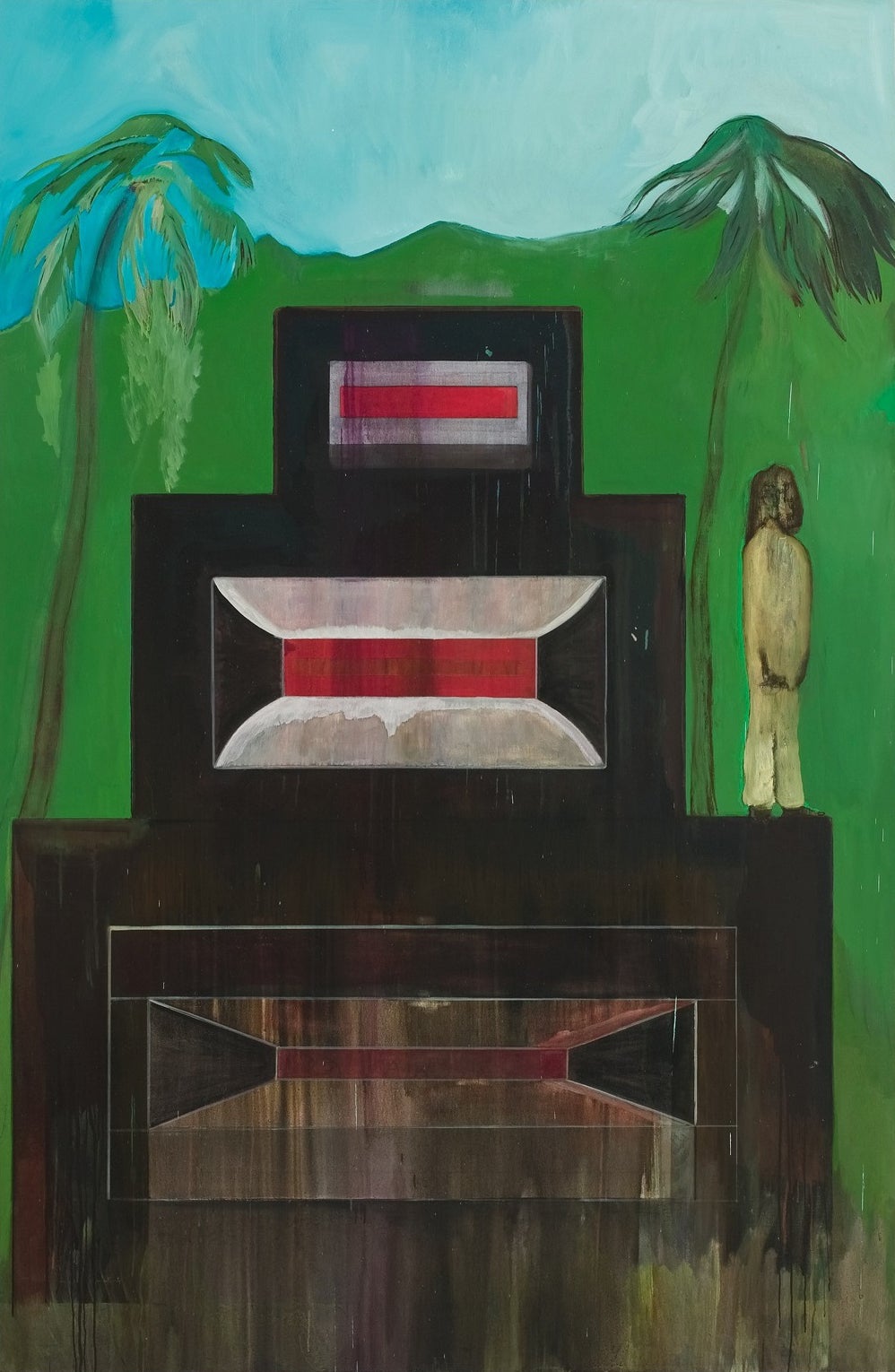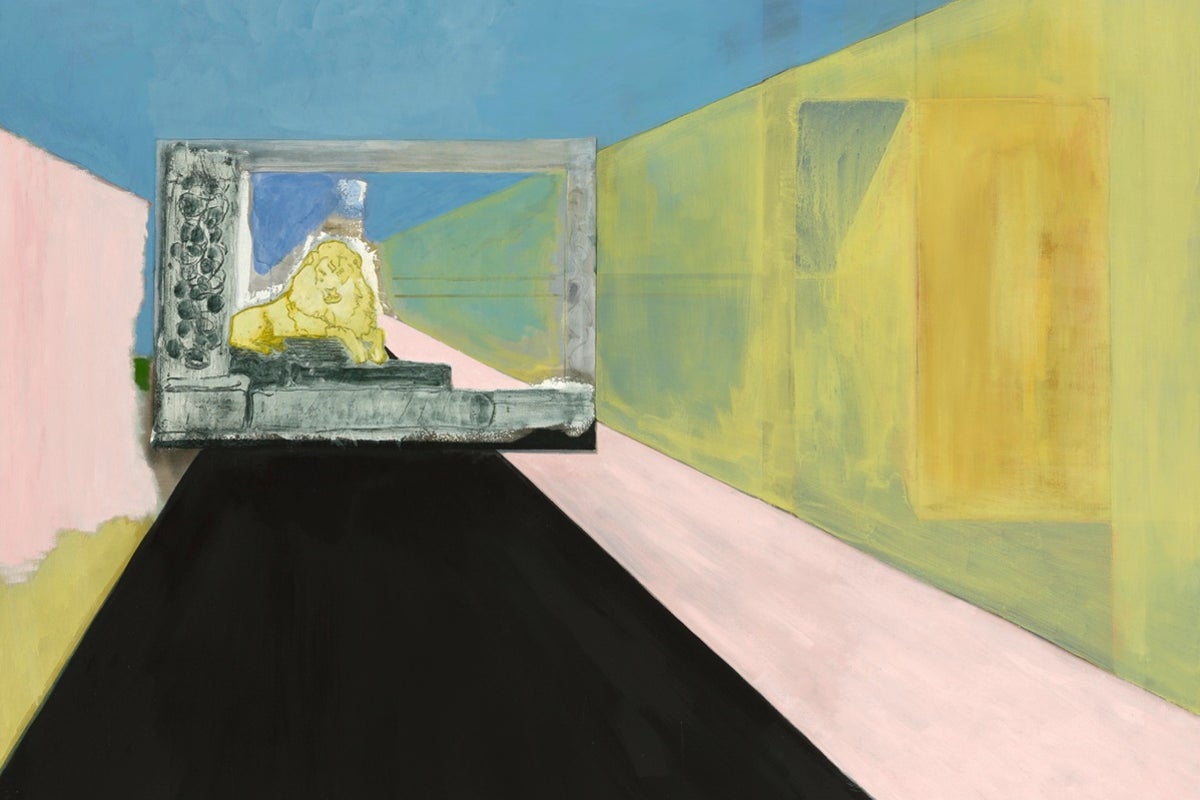This is a “live” review, from an exhibition that’s as near as most of us will get to attending a party – no, a gig – in the world’s coolest painter’s studio. I’m at the Serpentine Gallery, sitting in a vintage modernist armchair surrounded by a choice array of Peter Doig paintings, as ethereal ambient sounds drift from a Klangfilm Euronor speaker. This 1950s German sonic transmitter is as far as you’ll get from the near-invisible, hyper-directional speakers favoured in art galleries these days. Standing at nearly 10ft-high in its polished wooden casing, the spotlit speaker looms over the space like some monstrous modernist idol – a sculpture, almost, in its own right.
Doig’s multi-referential canvases have made him probably the single most influential painter in the world today. His assembling of different styles of painting and diverse forms of imagery – from old master paintings and random found photographs to horror movies – has often felt akin to a quasi-musical “mixing”. So the fact that he happens to be obsessed with music doesn’t come as a surprise.
Born in Scotland in 1959, and raised in Canada and Trinidad – the latter of which has been a big influence on his tastes – he chose to study at London’s St Martins School of Art to be close to his favourite post-punk bands. His record collection, which extends through calypso, reggae and hip-hop to rock and jazz, is dispersed through domiciles and lock-ups spanning three continents.
This, however, is the first exhibition to bring together Doig’s twin passions. Devised by Doig and sound-system expert Laurence Passera, it allows the public to enjoy spontaneously programmed selections from Doig’s record collection – based on the artist’s carefully curated playlists – all day every day for the show’s duration. No two experiences of the show will be the same.
Entering the show, it’s apparent immediately that the way the music is heard will be as important as what is heard. Doig’s paintings of Caribbean sound systems, monoliths of black speakers looming out of tropical vegetation, hang at the end of corridors to the left and right – strategically positioned, as though they are themselves contributing to the aural experience. The central domed space has been converted into a chapel of sound, with a set of Western Electric & Bell Labs speakers towering over one end of the room like some ominous altar.
While I’d have guessed at a date no earlier than 1980, the system was constructed for use in cinemas in the 1920s, during the days of the early talkies. The fact that the speakers would be hidden behind the screen to animate the images as they unfolded is apparently significant for Doig.

open image in gallery
Peter Doig’s ‘House of Music’ at Serpentine South (Prudence Cuming Associates, © Peter Doig. All Rights Reserved and Serpentine)
DJ equipment is set up in front, with a record cover showing what’s playing in old-school record shop style. When I arrive it happens to be the wafting voices and atmospheres of Brian Eno and Beatie Wolfe’s new LP Liminal. If it’s not quite the earth-shaking dub I was expecting, it makes a very pleasant background for three large new Doig paintings, each featuring lions.
Casually and apparently benignly wandering the streets of what I take to be the Trinidadian capital Port of Spain, these majestic beasts have been a feature in Doig’s paintings for a good decade, fusing elements of mythic lions, from children’s book illustrations to Rastafarian symbolism, in what feel like parables of wild nature and the “civilised” man-made world. The paintings quote, we’re told, from Caravaggio – which I’m afraid I couldn’t see – and 20th-century fauvists such as Matisse and Derain. The latter influence is evident in sumptuous colour, purple-inflected greens and deep oranges, and views of a lilac-tinged bay, which seems to carry us through a painterly portal from Trinidad to the French resort of Collioure – so significant in the history of early 20th-century painting. It’s the kind of dreamily resonant idea that perfectly suits the ambient-aural setting.

open image in gallery
‘Maracas, 2002–08’ (Peter Doig)
The record flips to the Seventies retro-hip of John Mayer’s Indo-Jazz Fusions, with sitar, pulsing tabla and Joe Herriott’s exquisitely rasping trumpet weaving around Doig’s ethereal portraits of legendary Calypsonians, which are spotlit in the otherwise dim space to haunting effect.
While Doig has said that he doesn’t want the music to be thought of as a “soundtrack” to the paintings, that is the way that many – possibly most – viewers will experience the show (and, I predict, very enjoyably). The music you hear will depend very much on the choices of the gallery assistants on the day. But one way or another you’ll be taken into the audio-visual world inside Peter Doig’s head. Even if you don’t take in all the aural nuances provided by the vintage equipment, assembled at such cost and effort, its physical presence and the clear degree of obsession behind it add greatly to this eccentric and entrancing experience.
Peter Doig: House of Music is at Serpentine South Gallery from 10 Oct until 8 Feb

